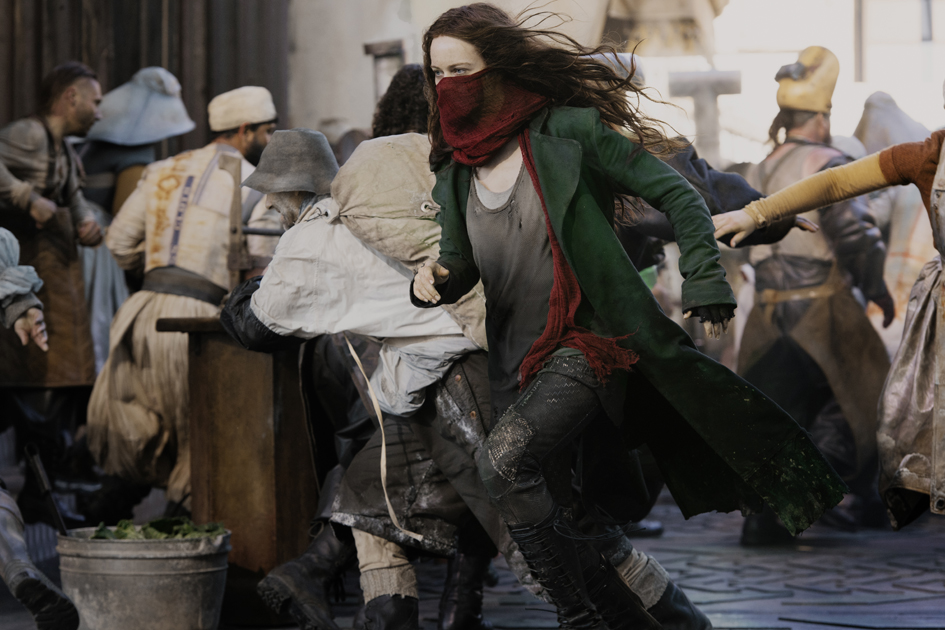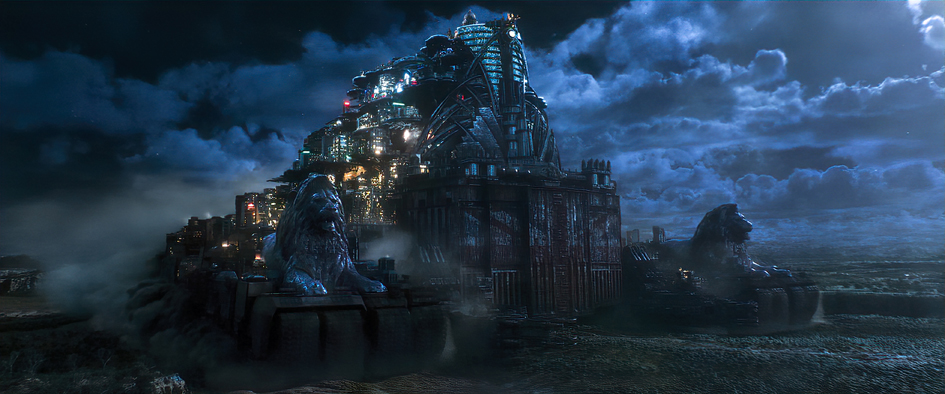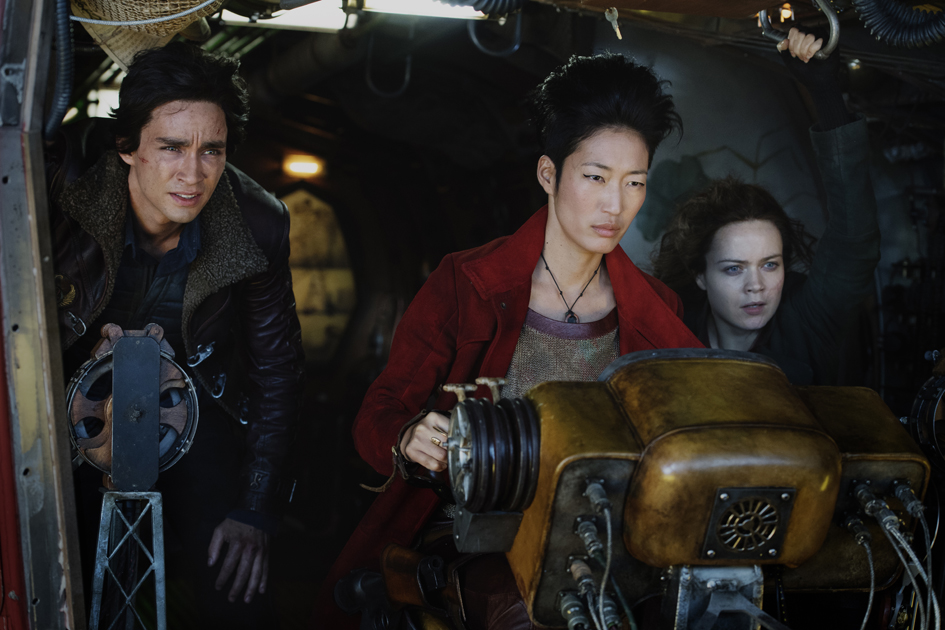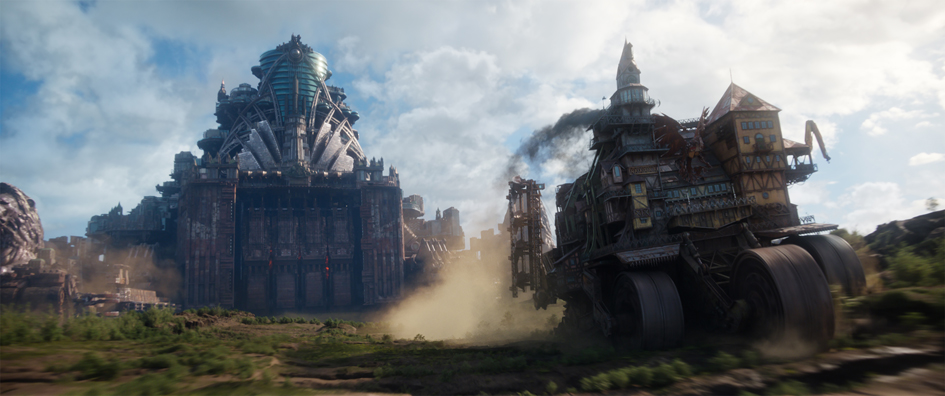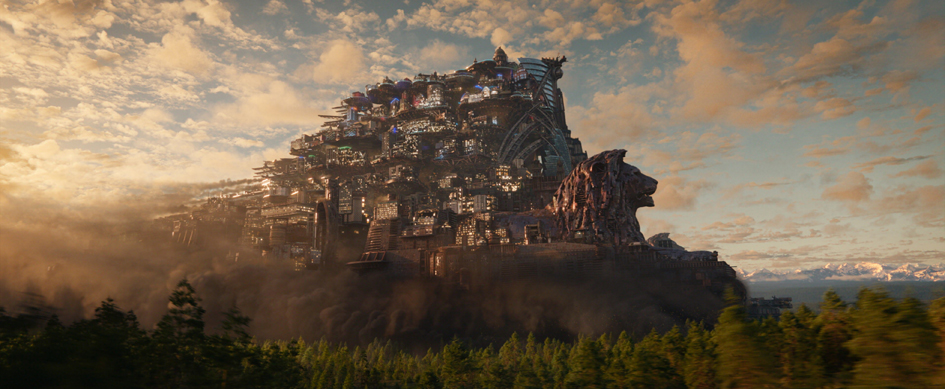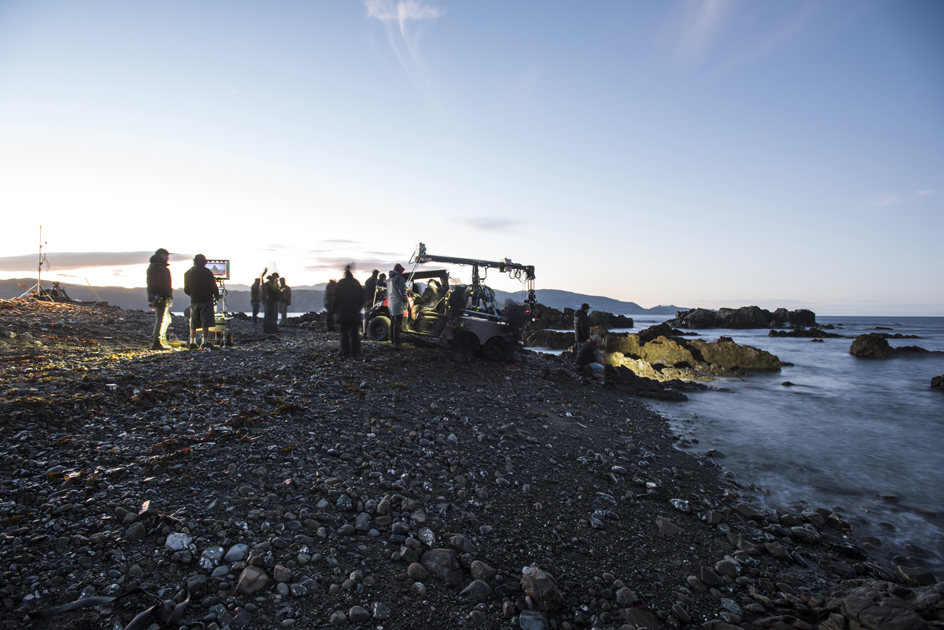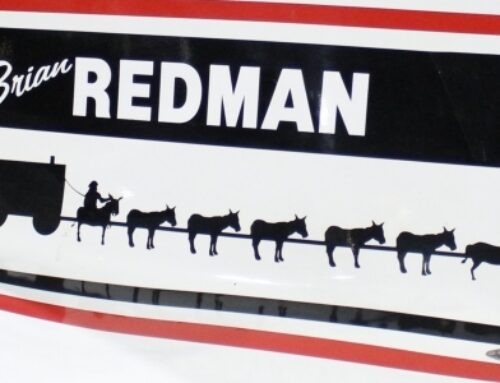As we navigate our lives through the present, or even the coming month and years, it’s easy to get bogged down as to what the distant future holds. Fortunately, Mortal Engines takes the guesswork out of that… sort of.
Review by John Grafman
Images provided by Universal Pictures
In brief, this Universal Pictures feature transports us to a time after the “60-Minute War”, where nearly total annihilation becomes a reality. As a result, those that remain scramble for precious resources, not unlike Mad Max. In order to pursue or evade, cities and civilization has become entirely mobile. Towns are now roaming the landscape as the ultimate off-road vehicles. Anything resembling streets and highways has long since been wiped out.

The traction city of London in “Mortal Engines.” The film is directed by Christian Rivers, and written by Fran Walsh, Philippa Boyens and Peter Jackson based on the novel by Philip Reeve.
The ultimate platform is the tracked behemoth, which is the conglomeration of the London’s remains. This predator city is on the hunt for smaller roving cities to prey upon, which it rapes for the resources. Mortal Engines really comes alive once you are able to suspend your disbelief, .
The storyline is not altogether different than one of the Star Wars sagas. It has its share of good guys (Robert Sheehan as Tom Natsworthy), and bad guys (Hugo Weaving as Thaddeus Valentine, Stephen Lang as Shrike), and heroic females (Hera Hilmar as Hester Shaw, and Jihae as Anna Fang). Yes, there’s an unsuspecting savior, a corrupt-two-face leader, and assorted characters that round-out the story.
Once you are able to suspend your disbelief, Mortal Engines really comes alive.
The plot is enough to keep the audience engaged, but that should come as no surprise. The screenplay is by the three-time Academy Award winning Fran Walsh, Philippa Boyens, and Peter Jackson of The Hobbit and Lord of the Rings trilogy. This is based on the award winning book series of Philip Reeve.
A Weta Digital team led by Ken McGaugh, Kevin Smith, Luke Millar and Dennis Yoo creates the incredible CGI visual effects. The film is produced by Zane Weiner and Zane Weiner (The Hobbit trilogy), Amanda Walker (The Hobbit trilogy), Deborah Forte (Goosebumps), Walsh and Jackson. The film’s executive producers are Ken Kamins (The Hobbit trilogy) and Boyens.
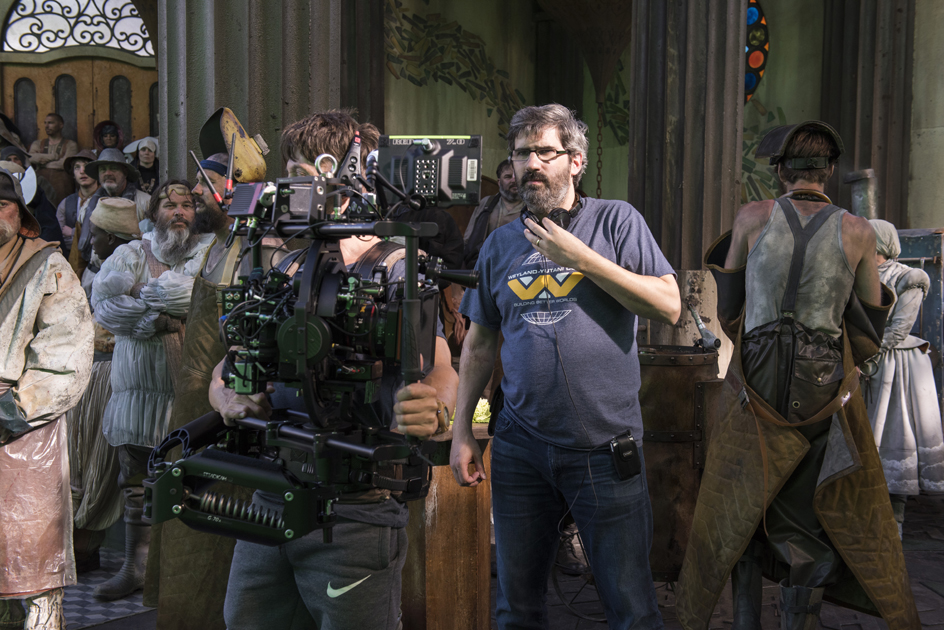
Director Christian Rivers on the New Zealand set of “Mortal Engines.” The film is directed by Christian Rivers, and written by Fran Walsh, Philippa Boyens and Peter Jackson based on the novel by Philip Reeve.
Pulling it all together is the direction of Oscar-winning visual-effects artist Christian Rivers (King Kong).
Regardless if this is your cup of tea or not, don’t let the story or drama distract from the imaginative transportation used in this wild tale. From the cities to the aircraft, and other land traversing machines, this not only has brave ideas, but it presents them credibly enough in a fantasy setting. This does make one wonder if the ways we currently move about this planet are really the best means possible? Or, it this simply the way our transportation evolved?

The traction city of London in Mortal Engines. The film is directed by Christian Rivers, and written by Fran Walsh, Philippa Boyens and Peter Jackson based on the novel by Philip Reeve.
The future is a rough place, and getting about on earth’s surface isn’t particularly simple, unless you have access to a horse.
The future is a rough place. In particular, getting about on earth’s surface isn’t particularly simple, unless you have access to a horse. This brings about fanciful solutions, like crawlers that are legged, caterpillar (insect, not tractor) machines. In our current day expeditions over our pothole strewn streets, one has to ask in this isn’t a novel solution?
The “what if” implications in Mortal Engines are worth the two-hour investment. Oh sure, there are some of the most brilliant visuals coming from the same individuals and teams that brought the Lord Of The Rings to the big screen. It’s hard focusing on anything for too long. The vast numbers of visual stimulants are overwhelming.

The airship Jenny Haniver confronts the traction city of London in “Mortal Engines.” The film is directed by Christian Rivers, and written by Fran Walsh, Philippa Boyens and Peter Jackson based on the novel by Philip Reeve.
Maybe the creative team ingested a healthy dose of Jules Verne, alcohol, or a few psychedelic drugs before starting the Mortal Engines project… or all the above!
I have to wonder if maybe the creative team ingested a healthy dose of Jules Verne, alcohol, or a few psychedelic drugs before the start of this project? Mortal Engines touts a gritty, mechanical feel, sort of steam-punkish in a weird way. Intermingling are gleaming, clean and modern bits that contrast with the 1900’s, industrial revolution technology.
The line marking the difference between the live action and the animated world is getting further blurred. The interaction with animation and real life provides a more cohesive film. As in Lord of the Rings, The Hobbit, Jurassic Park, or any number of other movies, the secret sauce to success lies in the detailed and talented artists. Ok, the digital software also makes the impossible possible.

(from left) Tom Natsworthy (Robert Sheehan) and Hester Shaw (Hera Hilmar) navigate the crevasses gouged into the earth by traction cities in “Mortal Engines.” The film is directed by Christian Rivers, and written by Fran Walsh, Philippa Boyens and Peter Jackson based on the novel by Philip Reeve.
What makes Mortal Engines even more poignant is the underlying relevance to what’s happening today in our world. In a moment of reflection, this does provide a comparison to our own leadership and the ramifications of those that are not on the level. Today, a swipe of a pen can either encourage a cleaner planet and the developments of electric vehicles, or create a catastrophic environment for our future. A push of a button by a can completely and irreversibly change our world. With an unstable leader, a 60-minute war could indeed sadly be the fate of the world. Fortunately, Mortal Engines might be the dose of reality necessary to prevent Armageddon.
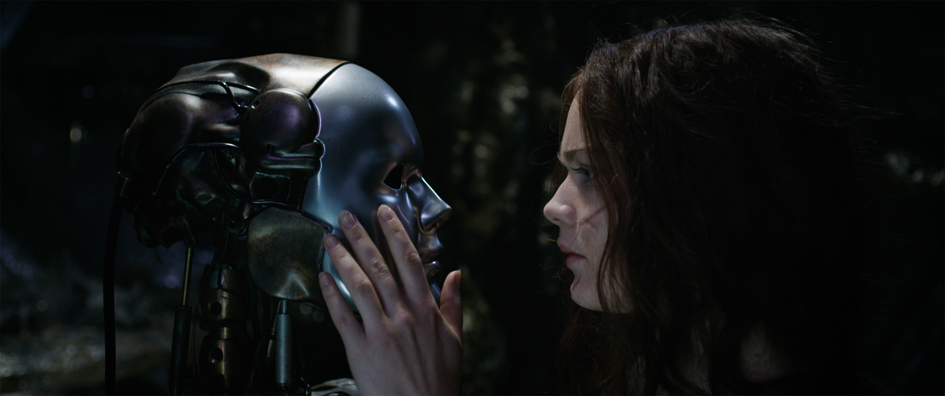
Hester Shaw (Hera Hilmar) examines an automata face plate in Shrike’s mobile workshop, Strole, in “Mortal Engines.” The film is directed by Christian Rivers, and written by Fran Walsh, Philippa Boyens and Peter Jackson based on the novel by Philip Reeve.
On the other hand, if nothing else, the Mortal Engines movie makes a brilliant distraction until tomorrow comes.

In “Mortal Engines,” large traction cities such as London (left) hunt down and devour smaller traction towns (right) to strip them of their labor and resources. The film is directed by Christian Rivers, and written by Fran Walsh, Philippa Boyens and Peter Jackson based on the novel by Philip Reeve.




